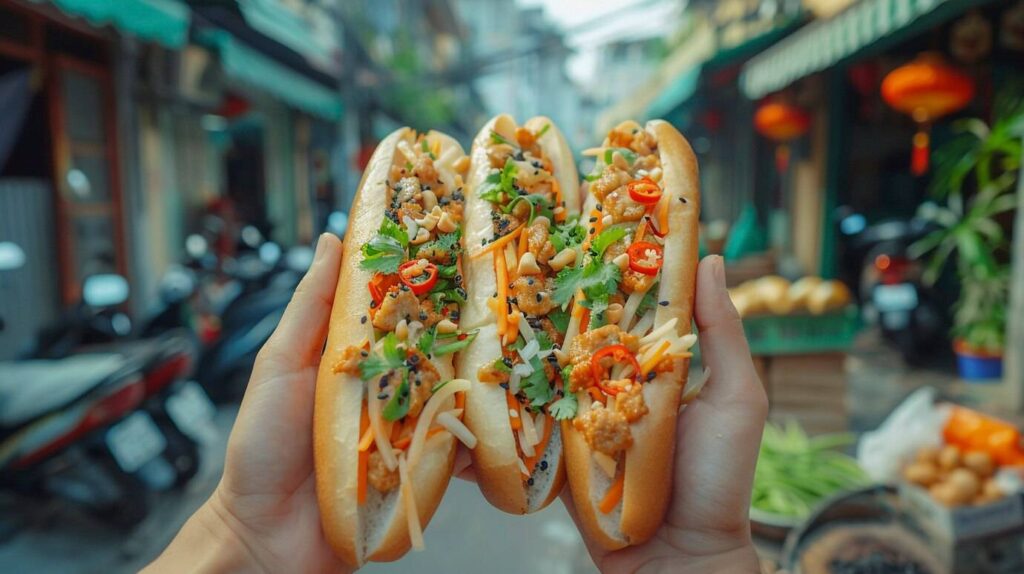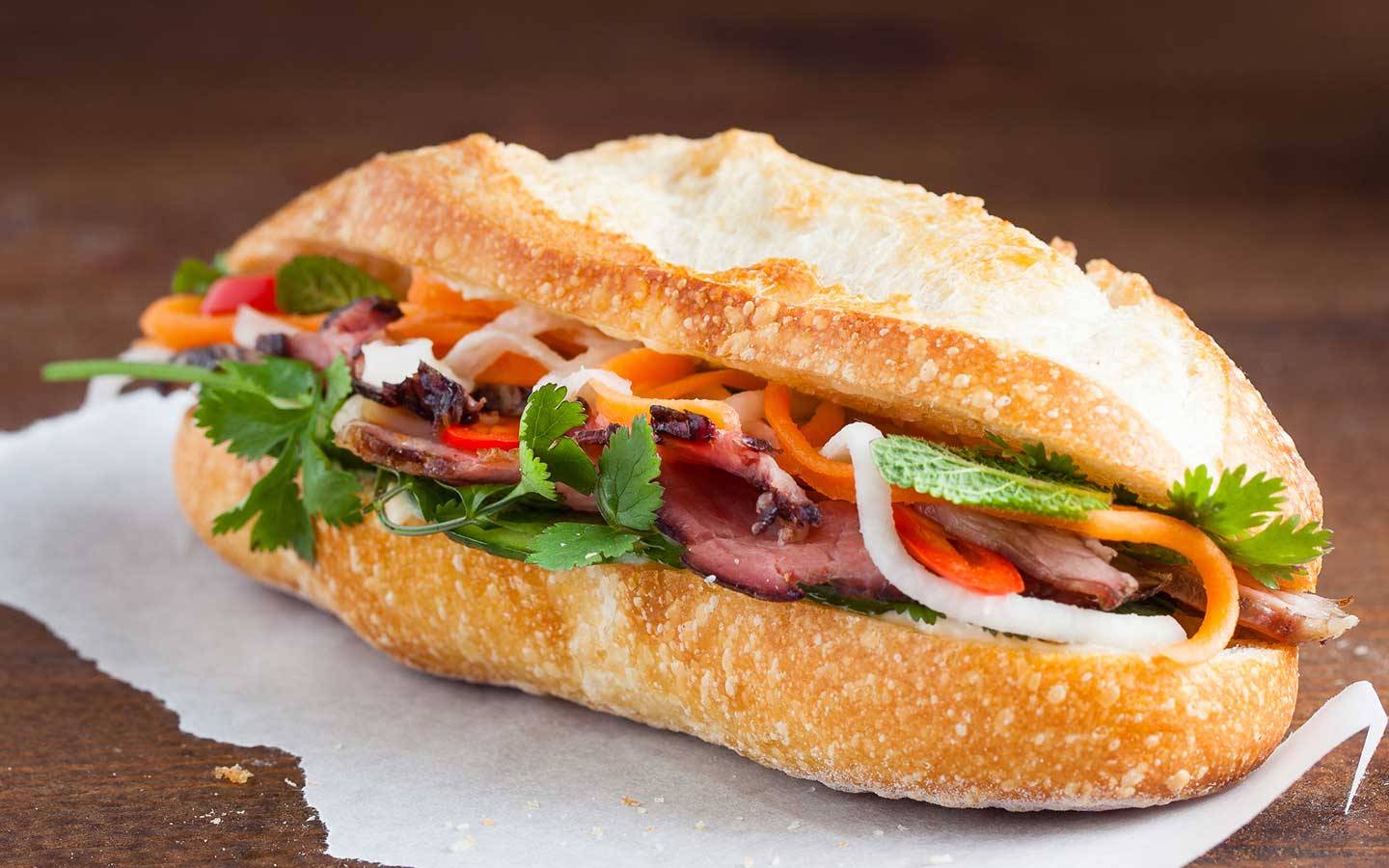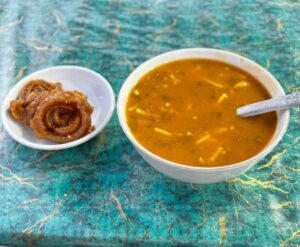The Food & Recipes Blog

Vietnamese Banh Mi: The Iconic Street Sandwich
Few sandwiches anywhere have as much flavour, texture and cultural history compressed into a single bite as a banh mi sandwich. And this iconic creation is not merely a staple of Vietnamese street food — it’s a culinary bridge, Ling says, that melds East with West, past with present. Whether snatched from a grimy vendor on the streets of Ho Chi Minh City or sipped at a chic café in London, banh mi has made its place in the canon of global cuisines.
But what exactly makes a banh mi so special? In this blog, we’ll explore the sandwich’s origins, key ingredients, and why it has become a beloved part of street food culture across the globe. We’ll also examine how the sandwich continues to evolve while remaining rooted in tradition.
What Is Banh Mi?
A French-Vietnamese Fusion
The word “banh mi” simply means “bread” in Vietnamese, but it has become shorthand for the sandwich itself over time. The dish originates from Vietnam’s colonial past, when the French introduced the baguette during the 19th century. Local bakers changed the classic baguette by adding rice flour. This made a lighter, crispier bread that is the base of today’s sandwich.
Typical Ingredients of a Banh Mi Sandwich
A classic banh mi sandwich features a variety of components that come together harmoniously:
- Baguette: Light, airy, and crisp — usually made with rice and wheat flour.
- Protein: Often pork (grilled, roasted, or cold cuts), but can include chicken, tofu, pâté, or even sardines.
- Pickled vegetables: Julienned carrots and daikon radish, adding crunch and acidity.
- Fresh herbs: Usually coriander (cilantro), occasionally mint or Thai basil.
- Cucumber slices: Provide freshness and texture.
- Chilli: Adds heat, usually in the form of sliced fresh chillies.
- Condiments: Mayonnaise and soy or Maggi seasoning.
Each bite is a balance of savoury, sweet, spicy, and tangy — a signature of Vietnamese cooking.
The History Behind the Sandwich
Colonial Origins and Post-War Evolution
The banh mi’s evolution mirrors Vietnam’s complex history. During French colonial rule (1887–1954), the French diet began to mix with urban Vietnamese culture. It included bread and deli meats. However, it wasn’t until after the First Indochina War, particularly in the 1950s, that the banh mi sandwich as we know it emerged.
In Saigon, now called Ho Chi Minh City, local vendors started customising the sandwich. They added Vietnamese cold cuts, herbs, and pickles, turning French ingredients into a unique local dish. The street version of banh mi was cheap, portable, and satisfying, making it ideal for Vietnam’s busy urban populations.
The Diaspora Effect
Following the Vietnam War, many Vietnamese refugees settled abroad, bringing the banh mi with them. Today, it is common to find Vietnamese street food stalls offering banh mi in cities like Paris, Sydney, Toronto, and London. Each region brings its twist, but the spirit of the sandwich remains intact.
Regional and Modern Variations
Regional Takes in Vietnam
Depending on where you go in Vietnam, street banh mi can vary significantly:
- Banh Mi Thit Nuong (Grilled Pork) – Popular in southern Vietnam, this dish features marinated, charcoal-grilled pork.
- Banh Mi Cha Lua – Includes slices of Vietnamese pork sausage.
- Banh Mi Pâté – Heavier on the French influence, includes a generous layer of liver pâté.
- Banh Mi Op La – Popular as breakfast, with fried eggs as the main protein.
Each region tailors the fillings and flavours to local tastes and available ingredients.
International Adaptations
As the banh mi gains international popularity, chefs have been experimenting:
- Vegan banh mi with tofu or jackfruit
- Korean fusion versions with bulgogi or kimchi
- Gourmet options with duck confit or Wagyu beef
Some purists may frown, but these variations show how versatile and appealing sandwiches can be worldwide.
Why Banh Mi Is a Street Food Icon
Accessibility and Affordability
One reason banh mi sandwiches became so popular is their accessibility. In Vietnam, they’re often sold from motorbike-mounted carts or tiny stalls for the equivalent of £1. Despite their low cost, they offer a complete meal packed with protein, carbohydrates, and vegetables.
The Perfect Grab-and-Go Meal
In the fast-paced environment of urban Vietnam, and increasingly in global cities, banh mi is a reliable on-the-go option. It’s portable, quick to prepare, and satisfying, ticking all the boxes for modern street food consumers.
Cultural Significance

Beyond taste and convenience, the banh mi tells a story. It’s a product of Vietnam’s colonial past, resilience, and ability to adapt. It symbolises a nation’s journey through adversity and reinvention — all within a humble loaf of bread.
Health Considerations
While delicious, is the banh mi healthy? The answer largely depends on what’s inside. Healthy recipes with lean proteins, lots of veggies, and little mayonnaise can be pretty balanced. However, modern or Westernised versions may be heavier in saturated fats or sodium.
Healthier tips:
- Opt for grilled proteins over processed meats
- Ask for light mayo or skip it altogether.
- Load up on vegetables and herbs.
- Choose wholegrain or multigrain baguettes where available.
Tips for Making Banh Mi at Home
Fancy trying your hand at making your banh mi sandwich? Here’s a basic approach to crafting the perfect version at home:
Ingredients You’ll Need:
- Vietnamese-style baguette (or a light, crusty roll)
- Cooked protein: grilled pork, chicken, tofu or even leftover roast
- Pickled vegetables: mix julienned carrots and daikon with sugar, vinegar, and salt
- Fresh herbs: Coriander is essential
- Cucumber and chillies
- Mayonnaise and soy sauce
Quick Steps:
- Lightly toast the baguette for extra crunch.
- Spread mayonnaise and pâté (if using) on the inside of the bread.
- Layer with protein, pickled vegetables, cucumber, chillies, and fresh herbs.
- Finish with a drizzle of soy sauce or Maggi seasoning.

Enjoy immediately while the bread is still warm and crispy.
The Future of Banh Mi
As plant-based diets and global fusion cuisine grow in popularity, the banh mi sandwich is set to attract even more fans worldwide. It’s versatile enough to embrace change while still retaining its identity.
Trends to watch:
- Sustainable fillings such as mushrooms or plant-based meat alternatives
- Gluten-free baguette options
- Fusion toppings inspired by Mexican, Korean, or Middle Eastern flavours
No matter how it changes, the banh mi will stay a key part of Vietnamese street food. It will keep telling stories through its flexible style.
More Than Just a Sandwich
The banh mi is not only a trendy sandwich but a symbol of cultural resilience and fusion. Whether you eat it at a roadside cart in Hanoi or a café in London, each mouthful carries the taste of Vietnam’s historical and culinary ingenuity. As Vietnamese street cuisine gains worldwide attention, the banh mi, with its humble simplicity, is an intriguingly profound ambassador.
So next time you’re seeking a quick lunch, culinary adventure, or slice of history, try the banh mi sandwich—you might find your new favourite.
To taste the flavour of Vietnam? Whether or not you’re a foodie — but especially if you’re just curious about the range of cuisines found worldwide — try to make your way to the closest Vietnamese restaurant or make something akin to a banh mi at home. Be sure to let us know what you created or discovered!









